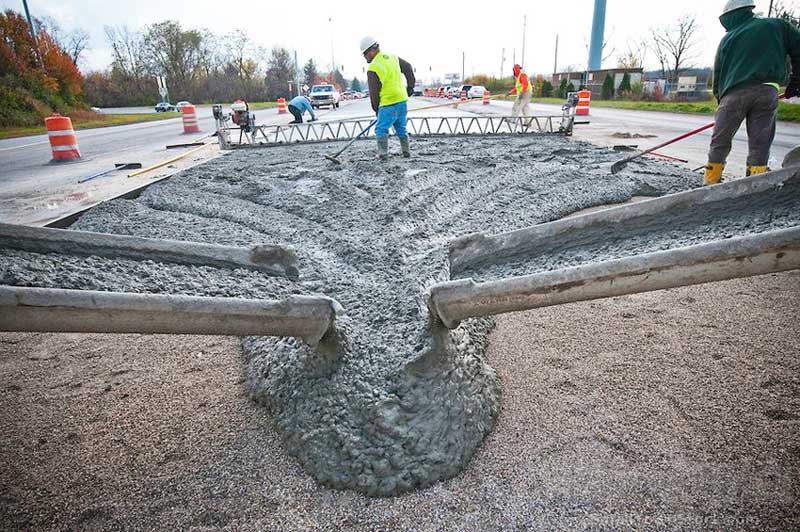Definition:
Silica Fume: Very fine non-crystalline silica produced in electric arc furnaces as a by product of the production of elemental silicon or alloys containing silicon-ACI 116R-Grey colored powder similar to Portland cement or some fly ash.
Fly Ash: Fly ash is a group of materials that can vary significantly in composition. It is residue left from burning coal, which is collected on an electrostatic precipitator or in a bag house. It mixes with flue gases that result when powdered coal is used to produce electric power.
Fly Ash standards:
Class F is made from burning anthracite and/or bituminous coal.
Class C is produced from lignite or sub bituminous coal. In Canada, there is a further distinction.
When the lime content is 8-20 percent, it is classified Cl, and when it is higher, it is class C.
Silica Fume ( ASTM C1240 ) :
Minimum Silicon Dioxide of 85 %
Maximum Moisture content to 3 %
Maximum loss in ignition to 6 %
The Oversize materials retained on a 45- m ( No.325) sieve to maximum of 10 %.
The maximum variation from average be no more than 5% points .
Comparison of chemical and physical Characteristics Fly Ash, Silica Fume and Portland cement:
Silica Fume is typically much more reactive, particularly at early ages , because of its higher silicon dioxide content and because of its very small particle size.
Advantages of Fly Ash :
Disadvantages of Fly Ash:
– Poor-quality fly ash can have a negative effect on concrete (increase permeability ).
– Some concrete will set slowly when fly ash is used. Though this might be perceived as a disadvantage, it can actually be a benefit by reducing thermal stress .
– Freeze-thaw durability may not be acceptable with the use of fly ash in concrete.
– High-carbon fly ash materials tend to use more water and darken the concrete as well.
Reaction of Silica fume in Concrete:
The benefit seen from adding Silica Fume are the result of changes to the microstructure of the concrete.
Physical Contribution of silica fume:
– Adding Silica Fume brings millions and millions of very small particles to concrete mixture.
– Just like fine aggregates fills in the spaces between coarse aggregate particles, Silica Fume fills in the spaces between cement grains.
– This phenomenon is frequently referred to as particle packing or micro-filling.
Even if Silica Fume didn’t react chemically, the micro-filler effect would bring about significant improvement in the nature of the concrete.
Chemical Contribution of silica fume:
– It is a very high amorphous silicon dioxide content because of that silica fume is a very reactive Pozzolanic material in concrete.
– As the Portland Cement in concrete begins to react chemically it releases Calcium hydroxide.
– The Silica Fume reacts with this Calcium hydroxide to form additional binder material called Calcium Silicate hydrate , which is very similar to the Calcium hydrate formed from the Portland cement.
– It is largely this additional binder that gives silica-fume concrete its improved hardened properties.
Effect of Silica Fume on fresh concrete and how those effects improve constructability and the final concrete:
Effect of Silica Fume on Hardened Concrete and how those effects are used in concrete applications:







